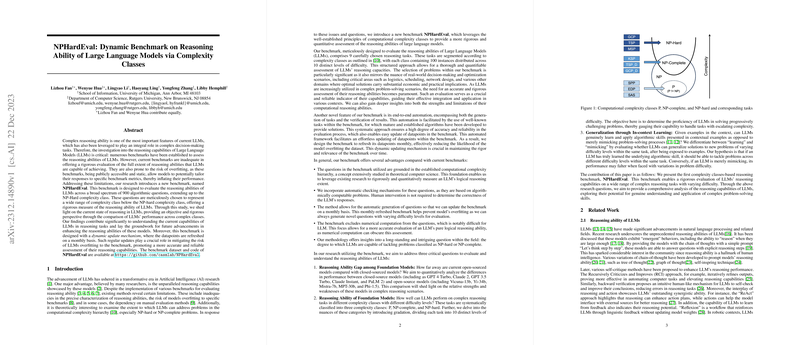Introduction to the Evaluation Benchmark
In the landscape of AI, particularly in the capabilities of LLMs, reasoning ability stands as a critical attribute, especially as these models are increasingly employed in complex problem-solving domains. A new benchmark named NPHardEval has been introduced to evaluate reasoning abilities, involving 900 algorithmic questions reaching the NP-Hard complexity level. This dynamic benchmark is uniquely designed to circumvent the overfitting issues prevalent in static benchmarks by refreshing its questions on a monthly basis.
Task Design and Model Assessment
NPHardEval provides a finely-tuned structure of nine tasks, each categorized into specific complexity classes (P, NP-complete, and NP-hard), and subdivided into ten difficulty levels. This graded system of tasks not only captures the reasoning capacity of LLMs but also reflects the challenges encountered in real-world problem-solving across various industries. Moreover, the benchmark stands out with its automated generation and evaluation mechanisms that amplify the reliability and accuracy of assessments. The tasks chosen purposefully omit math-intensive problems, honing in on pure logical reasoning challenges.
Insights from Initial Findings
Upon comparing several LLMs using the NPHardEval benchmark, distinct patterns emerged. Closed-source models typically showed superior reasoning performance over open-source counterparts across all complexity classes, with a conspicuous trend of diminishing accuracy and increasing failure rates as task difficulty escalated. Notably, GPT-4 consistently performed well, suggesting its robustness in approaching complex tasks.
In-context Learning and Future Directions
Evaluating the models' ability to generalize from provided examples revealed a disparate picture. Closed-source models exhibited the potential to genuinely learn and apply algorithmic skills, as indicated by a consistent performance across varying example difficulties. On the other hand, open-source models often struggled, particularly when the examples were simpler than the test questions. These results underline not only the raw reasoning capabilities of LLMs but also their ability—or lack thereof—to learn in a broader sense.
Looking ahead, NPHardEval will deploy updates to maintain relevance in the fast-evolving LLM arena. The focus will be on enhancing the evaluation framework, for example, to better represent complexity or to integrate multi-model interactions. These enhancements will pave the way for more realistic assessments of LLM capabilities, providing invaluable insights for their advancement and application in demanding cognitive tasks.
